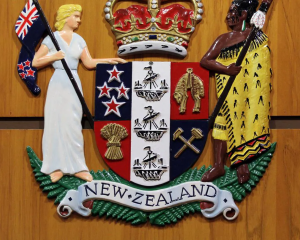
The comments, from Southern Lakes Helicopters director Sir Richard Hayes, came after it was announced yesterday all existing rescue helicopter bases in the South will continue operating under a new agreement.
Otago Rescue Helicopter Trust founding pilot Graeme Gale also welcomed the decision, following what he called a ''challenging little process''.
For the first time, Queenstown will have a dedicated rescue helicopter while the current on-call service from Te Anau will continue, Health Minister David Clark confirmed yesterday.
The future of the Te Anau service had been in doubt, but Dr Clark said all existing South Island bases would continue operating.
He said an agreement had been signed for southern region air ambulance services, provided by new joint venture Helicopter Emergency Medical Services New Zealand Ltd (Hems) between Helicopters Otago in Dunedin and GCH Aviation in Christchurch.
In Christchurch and Dunedin, the air ambulance service will operate 24/7.
Bases in Nelson, Greymouth and Queenstown will have dedicated crews during the day and crews on-call overnight.
It is the first time Queenstown will have had dedicated rescue helicopter cover.
Dr Clark said Queenstown would be served by a larger helicopter with better technical specifications, as would Greymouth.
''And I know that confirmation that the current on-call service from Te Anau will continue will be welcomed by people in the southwest of the South Island.''
Sir Richard said Southern Lakes Helicopters would be a subcontractor to Hems, and it would be business as usual for rescue operations in its catchment of Fiordland, Stewart Island, the Southern Ocean, the Subantarctic Islands and offshore.
''Common sense has prevailed.''
''If they thought they couldn't afford to have it, then it was shown they couldn't afford not to have it.''
The support from residents of the Te Anau region had been invaluable in helping retain the base, Sir Richard said.
''I and the staff really appreciate the support that's been shown to help bring care to those in need, as we've been doing for the past few decades.''
Mr Gale, who is also Helicopters Otago managing director, said the process had been challenging but he was pleased with the outcome.
''I think we just put the process behind us and move forward and provide the service they want, which is not hard for us.''
Next month, a Eurocopter EC145 helicopter will enter service with the Otago Rescue Helicopter Trust, joined in July next year by a new Airbus H145.
Mr Gale said both helicopters would provide more room for patient care, while also being faster and quieter than other aircraft in the fleet.












